

You have a business on the internet and wonder who is leading in your market – and what the competition is doing better than you? Then you should carry out an SEO competition analysis.
With a competitor analysis, you can find out who your competitors are on Google and what strategies they have used to reach the top. And with our tips and tricks, you can optimise your site and get ahead of the competition. Let’s go!
With a competitor analysis, you can find out what your competitors have to offer in terms of search engine optimisation. To do this, you put your competitors’ sites through their paces with various SEO tools.
Your goal: You want to know who your competitors are and how you can optimise your own site to position yourself successfully in the competition. Sounds time-consuming? It is. But it’s worth it! Because with the knowledge you gain, you can develop sustainable strategies for your own website to position yourself at the top in the long term.
First, you need to identify your most important competitors. Various SEO tools can help you with this: Semrush is recommended to identify the relevant keywords of your competitors. The best way to analyse the backlinks is with Ahrefs. Both approaches are important because there is always competition – no matter how small the niche is in the market. Therefore: Know your competitors! Don’t be fooled by small sites – sometimes they do a lot right and you can learn a lot from them.
First, you should find out which keywords your competitors use to get the most organic traffic. The best way to do this is to use Sistrix. With a keyword gap analysis, you can find keywords for which your competitors are ranking but you are not. In addition, the gap analysis gives you a view of common search terms for which your competitors possibly rank better than you. You can then directly compare the respective URLs and optimise your own pages accordingly. At Sistrix, you use the “Opportunities” section under the “Keywords” category. There you can compare up to three competitors with each other:
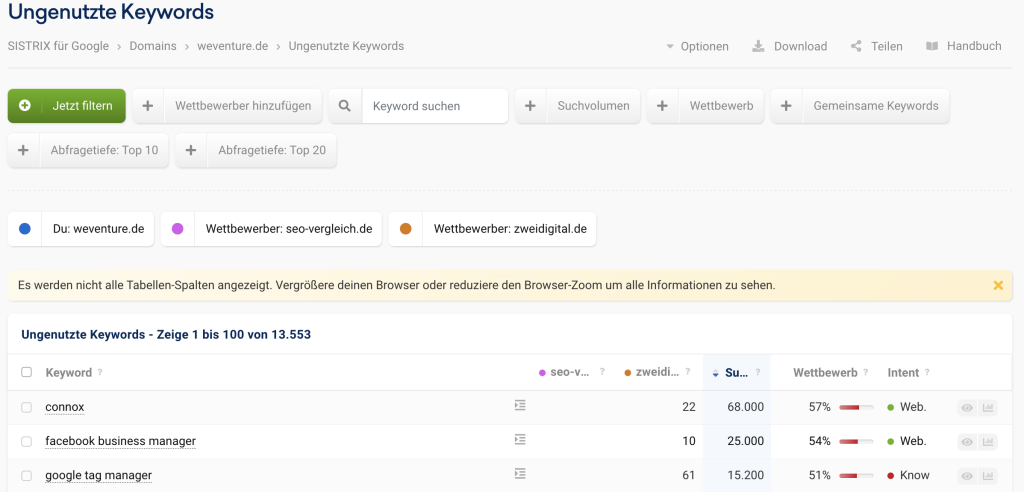
This process also gives you an overview of the competition for a keyword. Keywords with higher competition tend to be harder to rank for. Once you have determined all relevant keywords, it is worth taking a look at the SERPs: Which pages rank better than yours in the search results and why? In this context, the quality of the content, for example, can be decisive. In order to rank higher than the competition in the future, you must also use your keywords correctly. But be careful: When placing keywords, you should proceed with caution and not use them too frequently or spammily. Otherwise you risk losing ranking. In this context, SEO experts speak of so-called “keyword bashing” which in the worst case can lead to a Google penalty. Our recommendation: Pay attention to the quality of your texts, address the search intentions of potential customers and use your keywords in a targeted manner.
Which existing texts already rank well and which keywords were used? What is the content good for? When assessing the content, especially consider the search intentions of the users.
When analysing your competition, also look at the internal links. Does your competitor link from blog articles to service pages and thus ensure a good content link between the sub-pages? Then you could also think about this strategy.
In the SEO tool Semrush, you can create an SEO content template and enter your target keywords there. Semrush then creates a template with content recommendations based on your rivals in the Google top 10. These recommendations include, for example, page titles, text length or even partners for backlinks. Based on these tips, you can optimise your content in a targeted manner.
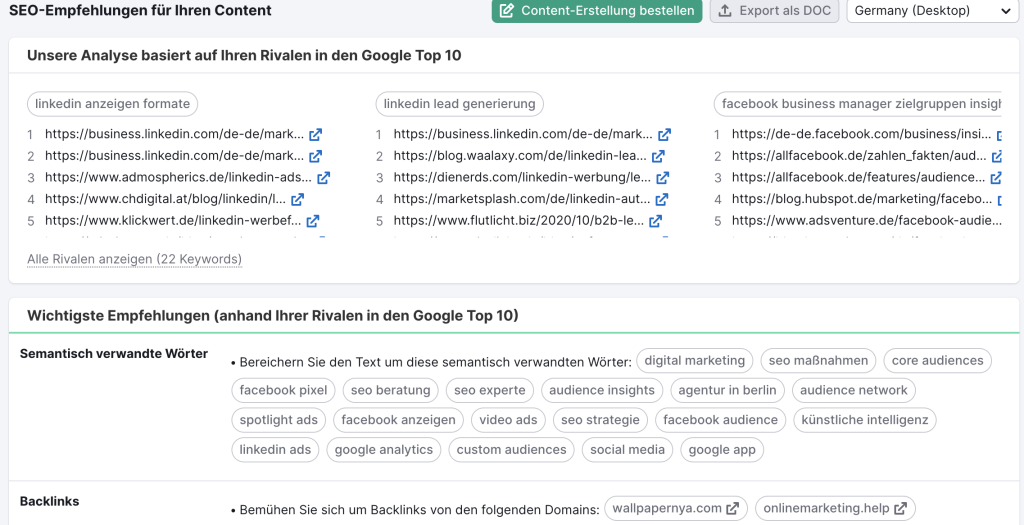
However, not only content and keywords play a central role in an SEO competition analysis. Web design, usability and page speed must also be convincing. After all, what good is the best content if it takes five seconds to load and the page looks like it’s from the 90s?
The loading speed of a page, i.e. the page speed, is an important ranking factor, because experience shows that longer loading times lead to a higher bounce rate. To check the technical properties of a website, it is best to use the PageSpeed Insights page.
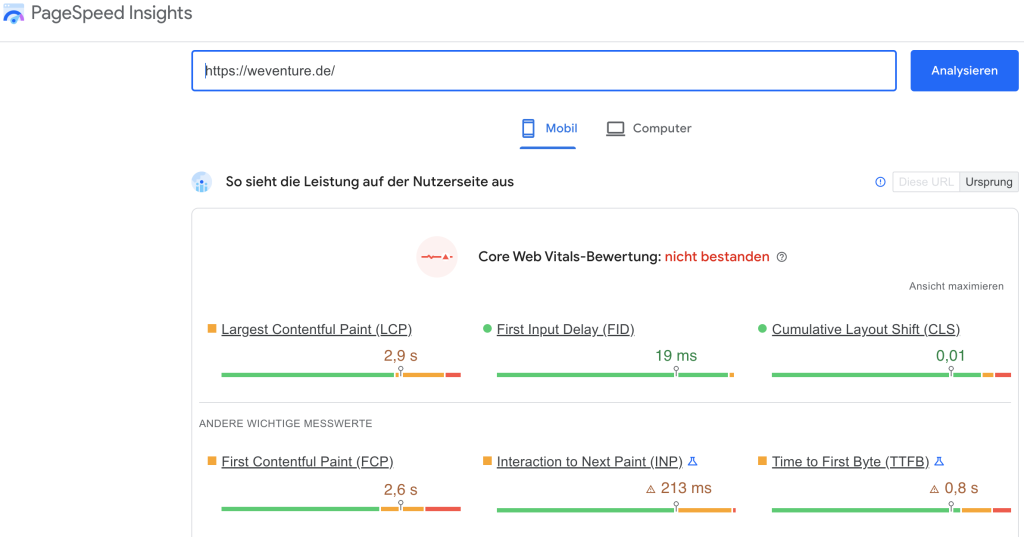
There you get a good overview and can check the speed of a website for mobile and desktop. Important: To carry out this process correctly, it is best to use the application in an incognito window of your browser.
Likewise, usability should not be underestimated in SEO competition and is constantly gaining in importance: How is the navigation of my website structured in comparison to the competition? For example, a burger menu may be preferred to a visible navigation for design reasons and have considerable disadvantages from a usability point of view: Users may not find the menu as easily and may find it harder to grasp at a glance. But even with a visible navigation, you can do a lot wrong – or right. For example, the first menu level should be as slim and clear as possible and be supplemented by meaningful subcategories as needed. Ideally, you should select the terms according to search volume so that your product pages, for example, benefit from them. .
You should be similarly careful with CTAs that are too large. They can seem intrusive and confusing to visitors and thus tend to discourage them. Menu, navigation and CTAs are therefore a good way to identify potential for your website.
Last but not least, you should analyse the meta data of the competition. The best way to do this is to use the Google Chrome extension “SEO-META in 1 CLICK”.
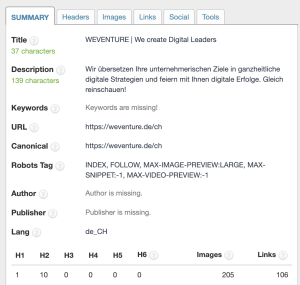
The extension shows you important SEO information of a website at a glance. If the top-ranking competitor uses many snappy CTAs and emojis in the description, you should probably do the same. To use your meta data correctly, you should pay attention to the correct number of characters. The Google Snippet Generator or the Yoast plug-in from WordPress can help you here.
We have already looked at the internal links, but you should also take a look at the link profile of the competition. After all, backlinks are still one of the hottest ranking factors for Google. With SEO tools such as Ahrefs, you can perform a backlink analysis and evaluate and compare the link profiles of your competitors. It is worth taking a look at the URL rating distribution, because it shows you the strength of the link profile of the linking page as a practical value from 0-100.
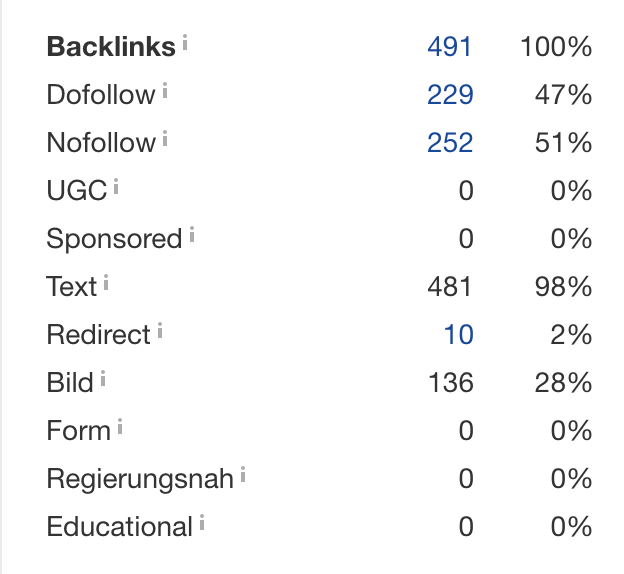
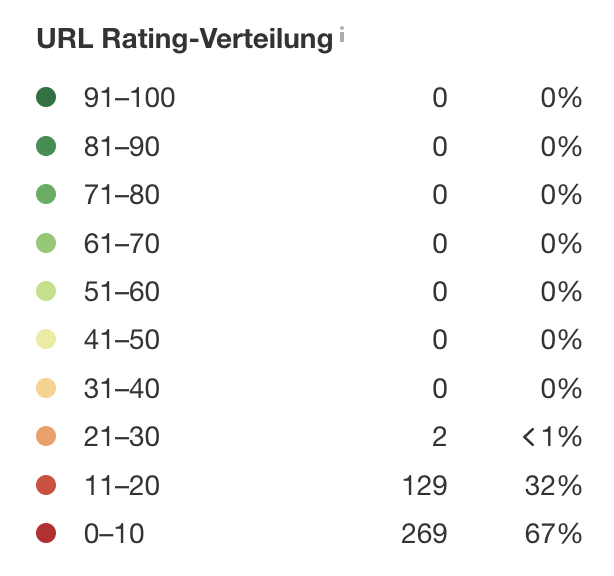
Backlinks only add value to your site if your partner has a high URL rating score. Does your competition receive backlinks from well-known magazines or shops that would also be suitable partners for your site? Then get in touch with the relevant contact person and secure high-quality backlinks! In addition, interesting and well-ranking blog articles can draw attention to your website and thus ensure new partnerships. Important: Backlinks should always be gained in a “natural way”. We advise against the excessive purchase of backlinks. Google can quickly punish you for such an offence.
1. Always make sure to find your real competitors
An SEO competition analysis is only really useful if you have analysed the market in detail beforehand. This way you can identify your most important competitors.
2. Focus on relevant data
Since an SEO competitor analysis takes a lot of time, you should create a list of possible optimisation measures at the beginning. Then you can analyse your competitors in a targeted manner. Do not go too deep into the details, but look for the data that can have a positive effect on your performance in the future.
3. Take your cue from those practices of your competitors that make sense and work for you.
Whether it’s technical SEO or content-related aspects – feel free to use the knowledge of others, but apply it individually and sensibly. Look carefully at what tactics make sense for your brand and site, and decide against approaches that don’t suit you.
An SEO competition analysis is an important tool for successful search engine optimisation. Through targeted analyses, you can identify your strongest competitors. With your new knowledge, you can develop sustainable strategies and thus overtake your competitors.